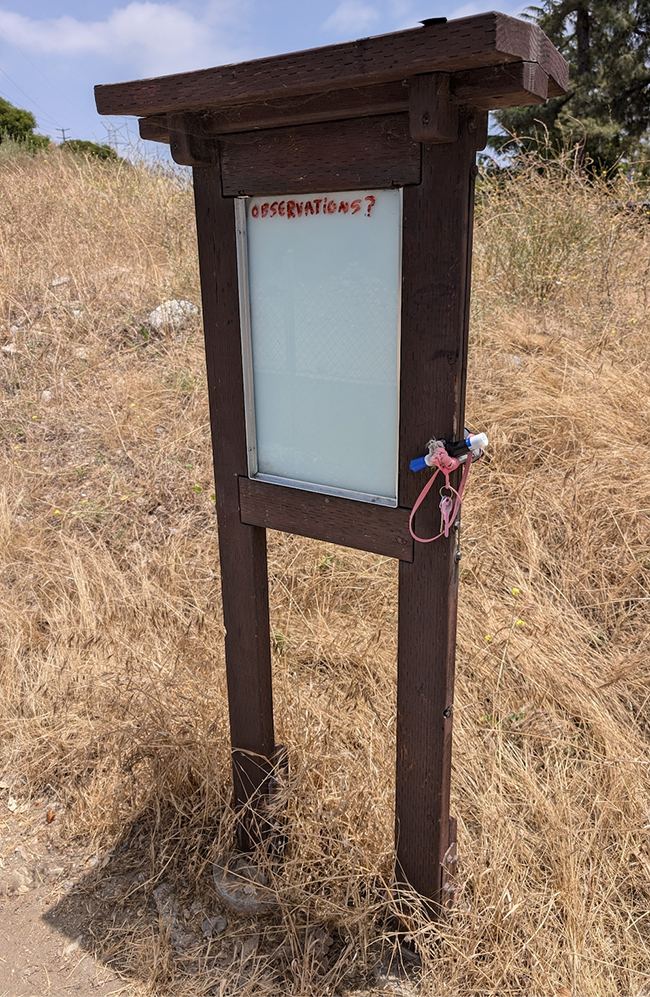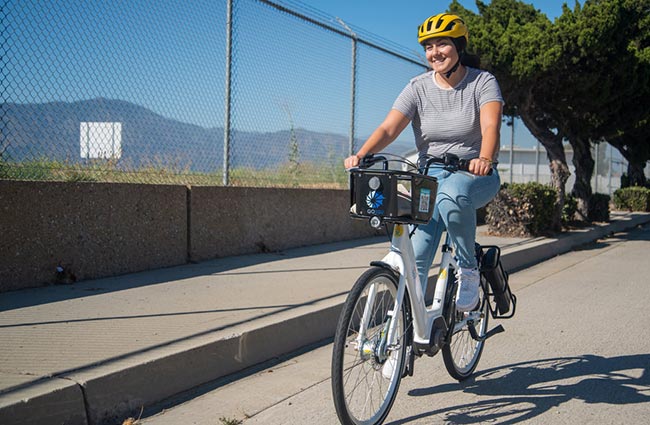Gold Line bridge design evolves during city review process
The Gold Line bridge and parking garage were in front of Claremont commissions this week, as both the planning and architectural bodies reviewed design options.
Assistant City Manager Colin Tudor introduced the plans, which included some detailed renderings, along with Claremont architect John Bohn. Mr. Bohn was tasked with coming up with a design for the bridge, as well as a concept of the future parking garage on College Avenue and First Street.
The city introduced three versions of the bridge and two versions of the parking garage—a version sent in by the Gold Line Construction Authority and an “aspirational,” or idealistic version that could cost the city a lot more money.
The aspirational versions would be seen as “betterments,” according to Mr. Tudor, meaning the city would have to pony up the money. How much money remains to be seen; Mr. Tudor firmly said no general fund money would be spent, but touted two transit fund sources totaling between $750,000 to $1 million.
The bridge design presented by the construction authority, according to Mr. Tudor, has the standard design that would be present at every overpass on the line. But the authority also sent in a second option—a circular design all over the span and the abutment that harkens back to the Pomona Valley’s citrus industry.
The design received mixed reviews from both commissions, with planning commission chair Richard Rosenbluth and architectural commissioner John Neiuber calling them “fish scales.”
The third design, presented by Mr. Bohn, is much more dynamic-looking, featuring jagged lines moving up and down the abutment and span he described as “a riff off of Karl Benjamin,” the noted Claremont modern artist.
“I feel like 21st century communities want their own identity, their own sense of scale and place,” Mr. Bohn said.
The city also offered additional landscaping around the bridge to create a “sense of scale” and to make the area more pedestrian-friendly. Winding pathways and shrubbery dotted the design, and pendant lights were shown hanging down from the ceiling of the span.
The bridge received a generally mixed reception from both commissions, with the majority of the architectural commission in favor of the Karl Benjamin design.
Architectural commissioner Maureen Wheeler noted she was “leery” about the pendant lights, and preferred planters instead. Bob Perry, also of the architectural commission, wanted the design and the span least intrusive to the community as possible.
But, “there’s only so much you can do to hide the reality that it’s a bridge,” he added.
During public comment Monday evening, Karen Rosenthal said the bridge should not be the focus, but rather what is planted and built around it.
“From a pedestrian viewpoint, the little plaza areas on each sides and the access from north and south are really eye openers and representative of Claremont and the community,” she said.
Some members of the planning commission, including Rick Reed, promoted the idea of lowering the 19-foot high bridge in an effort to decrease the impact on the Village. Others, like planning commissioner Leigh Anne Jones, said the bridge would “tend to be a little oppressive, not something you would want to walk under,” if it were lowered.
But architectural commission chair Mark Schoeman was more positive about the bridge, looking back to the original design proposed by the construction authority in 2016.
“I think if you were to squint at these plans and the design we’re looking at, we’ve won, compared to what was originally proposed by the Gold Line,” he said.
Parking garage plans
Two versions of the proposed parking garage on First Street and College Avenue were also presented to the commissions. The first, from the construction authority, is a basic rectangular-shaped building with a staircase along the side and space for up to 1,200 cars. The aspirational design, presented by Mr. Bohn, zig-zagged along the space and offered a center garden area with trees to make it more inviting.
The eastern end of the structure plans would have a drop-off zone, and a plaza on the west side near the corner of College and First will include a public restroom and tie in the garage to the Gold Line station.
The Gold Line is leaning toward charging three dollars to park in the garage, which would significantly lower the amount of cars—it’s estimated that around 539 cars would park in the garage daily if Montclair was the end of the line, and 870 cars if Claremont was the end. Ultimately, the true number of spaces the parking garage may have is still up in the air, and will be determined in the future, Mr. Tudor said.
Both commissions were more positive about Mr. Bohn’s design. Mr. Neiuber said while he liked Mr. Bohn’s design more, “I don’t know how much this is going to matter,” given the lack of funds for it.
The Traffic and Transportation Commission will also look at the plans on Thursday evening after press time. The Claremont city council will go over the designs for the bridge and the parking garage at its April 24 meeting.
Montclair terminus in doubt
Montclair’s status as a terminus, or end of the line, is apparently up in the air, and Claremont serving as the end of the Gold Line is a real possibility.
This information came up during Monday night’s architectural commission meeting, when commissioner John Neiuber asked Assistant City Manager Colin Tudor about whether Montclair has the money to fund their share of the $1.5 billion project.
Mr. Tudor quickly explained the situation, calling them “political issues” and saying Montclair has had a rough time getting money from San Bernardino County.
“So Colin, the chances are that right now or in the very near future, the terminus is going to be Claremont?” Mr. Neiuber later asked.
“Yes. The odds are unfortunately pretty good,” Mr. Tudor replied, adding the city is still hopeful the San Bernardino County Transportation Authority (SBCTA) could eventually come up with the money.
Gold Line Construction Authority COO Lisa Levy Buch said the San Bernardino County Transportation Authority (SBCTA) is missing a large chunk of its $70 million overall contribution to the project. SBCTA spokesperson Tim Watkins said their current shortfall was around $39 million.
Ms. Bush said they remained committed to bringing the Gold Line to Montclair.
Ms. Buch noted that number is still in the estimate phase, and the construction authority has allowed SBCTA to fund their share of the project up to two years after the notice to proceed goes out later this year.
“We have given San Bernardino County additional time to come up with their money and still be able to be built as part of this project,” she said.
Much like the construction authority’s quest to close its $250 million shortfall, the SBCTA is looking to cap and trade funds. Mr. Watkins said they are looking to the Transit and Intercity Rail Capital Program to fund the gap. He wasn’t sure when SBCTA would know if they get those funds, while the construction authority will find out how much of their shortfall could be covered at the end of April.
He added that a lot of where the funding goes is still contingent on if the Foothill Gold Line Construction Authority gets the light rail to the county line.
“If it gets there, we’re committed to getting it the rest of the way,” Mr. Watkins said.
—Matthew Bramlett
news@claremont-courier.com










0 Comments